The coolest sculpture park you’ve (probably) never heard about
I have traveled the world, and been moved by many of the works of art I've seen. But never this much.

Last month, Brent and I were in Oslo, Norway, and one morning, I went for one of my early walks. I knew there was a park near our apartment—popular with the locals—and a famous sculpture garden.
I’ll go there, I thought.
I soon found myself at the start of a bridge across a large pond.
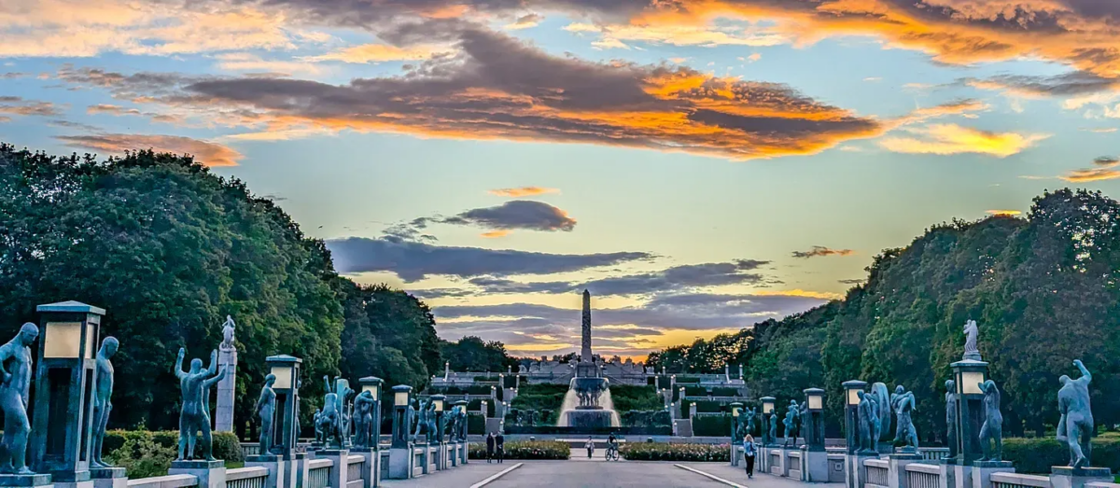
Pack your bags, we’re going on an adventure
Subscribe to our weekly newsletter for the best LGBTQ+ travel guides, stories, and more.
Subscribe to our Newsletter today
There were bronze sculptures on the bridge on either side. Lots of them, all human.
Naked humans.
Including a few doing some very unexpected things.
One man looked like he was hurling a woman to the ground.
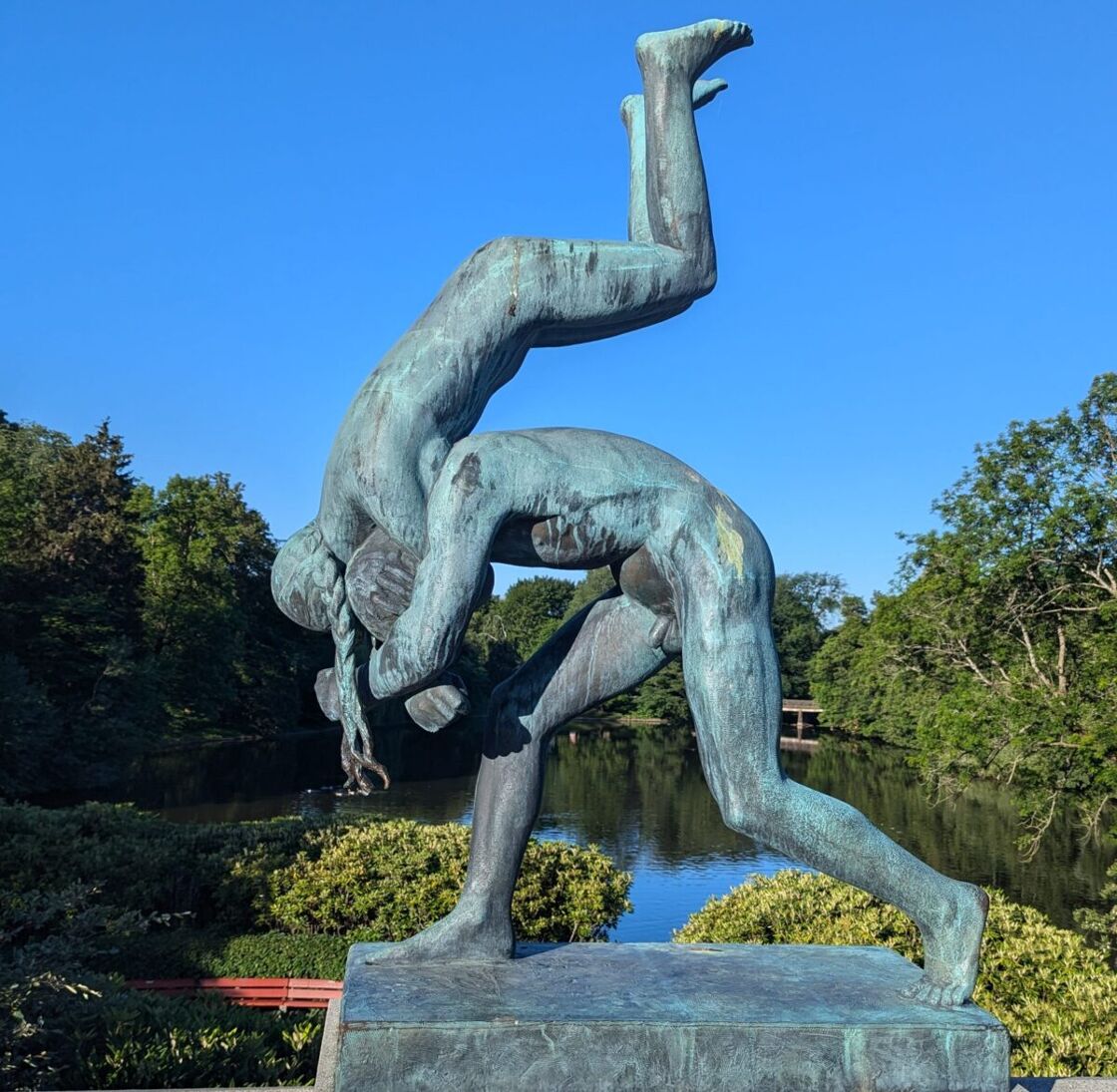
A small boy seemed to be throwing a tantrum.
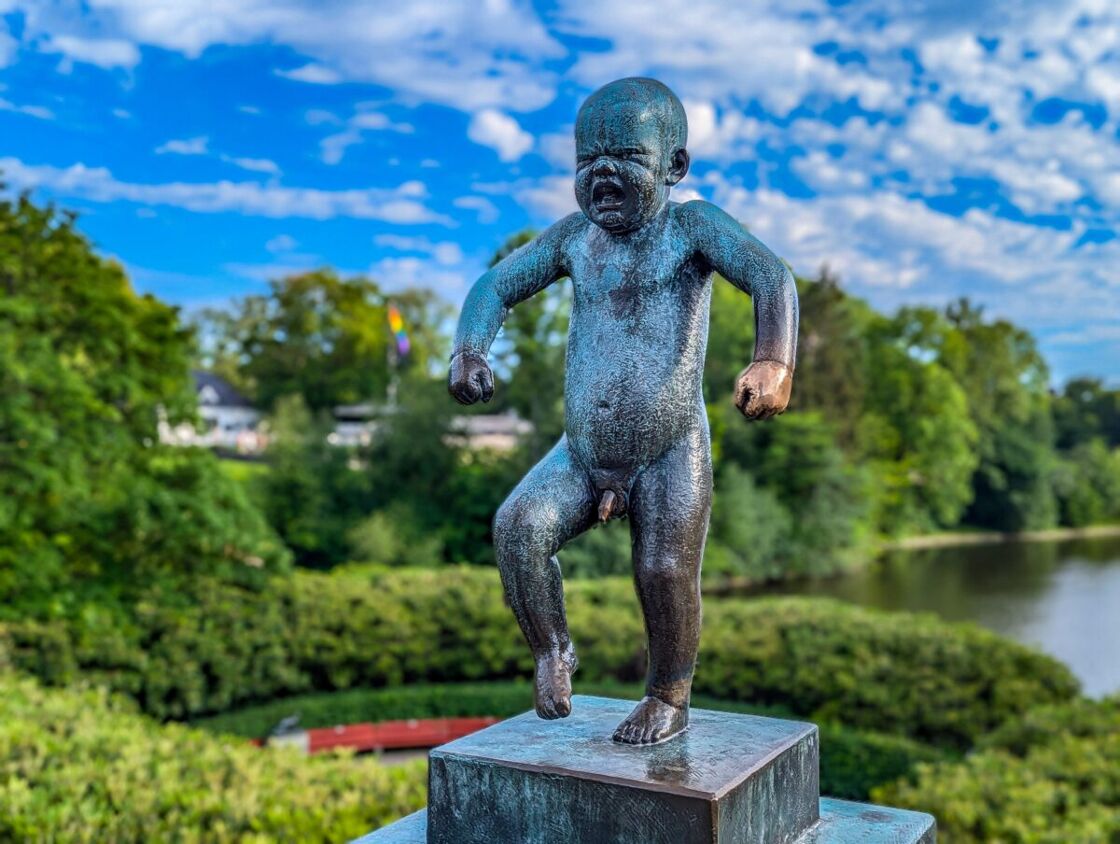
One man seemed to think an awful lot of himself — and, well, maybe he had reason to.
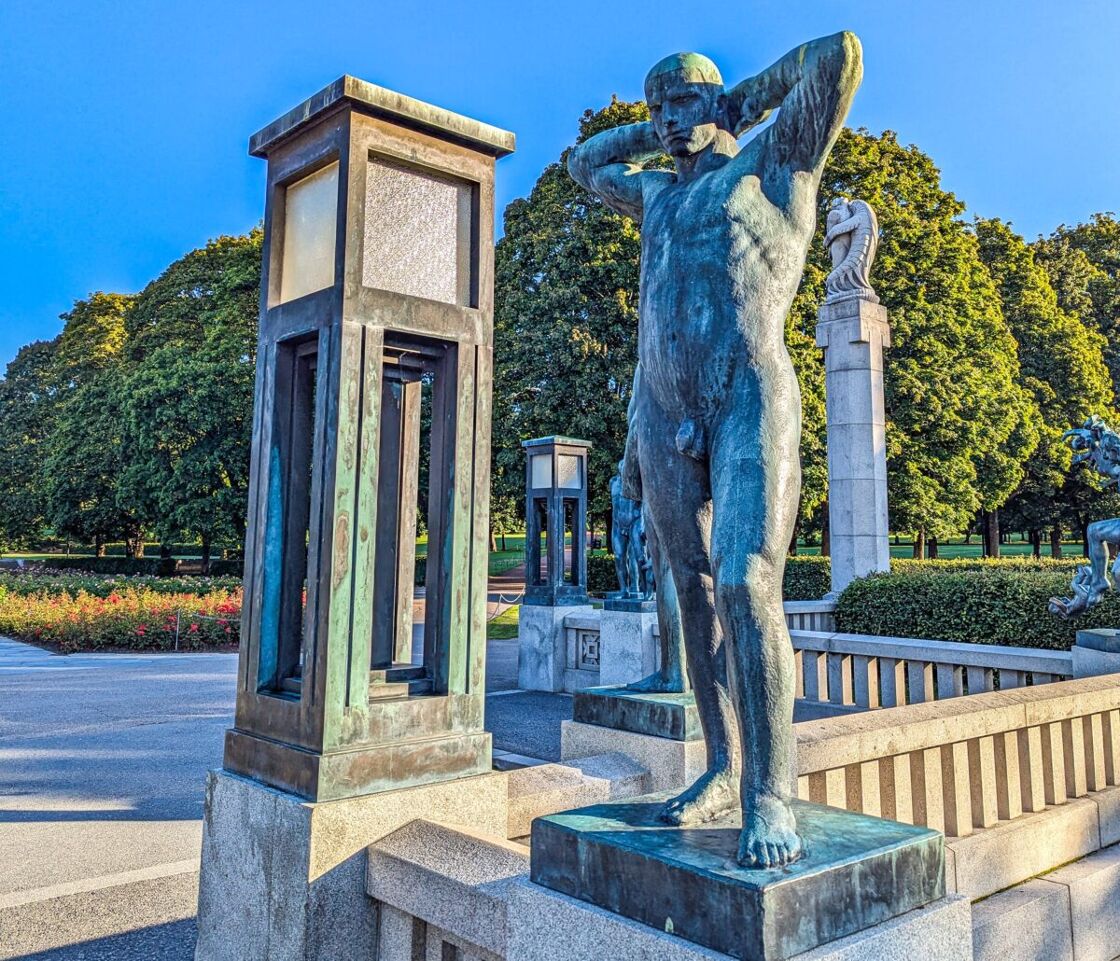
Despite being naked, most of the figures weren’t erotic exactly, but they were definitely intimate. I liked how they captured such a wide range of emotions.
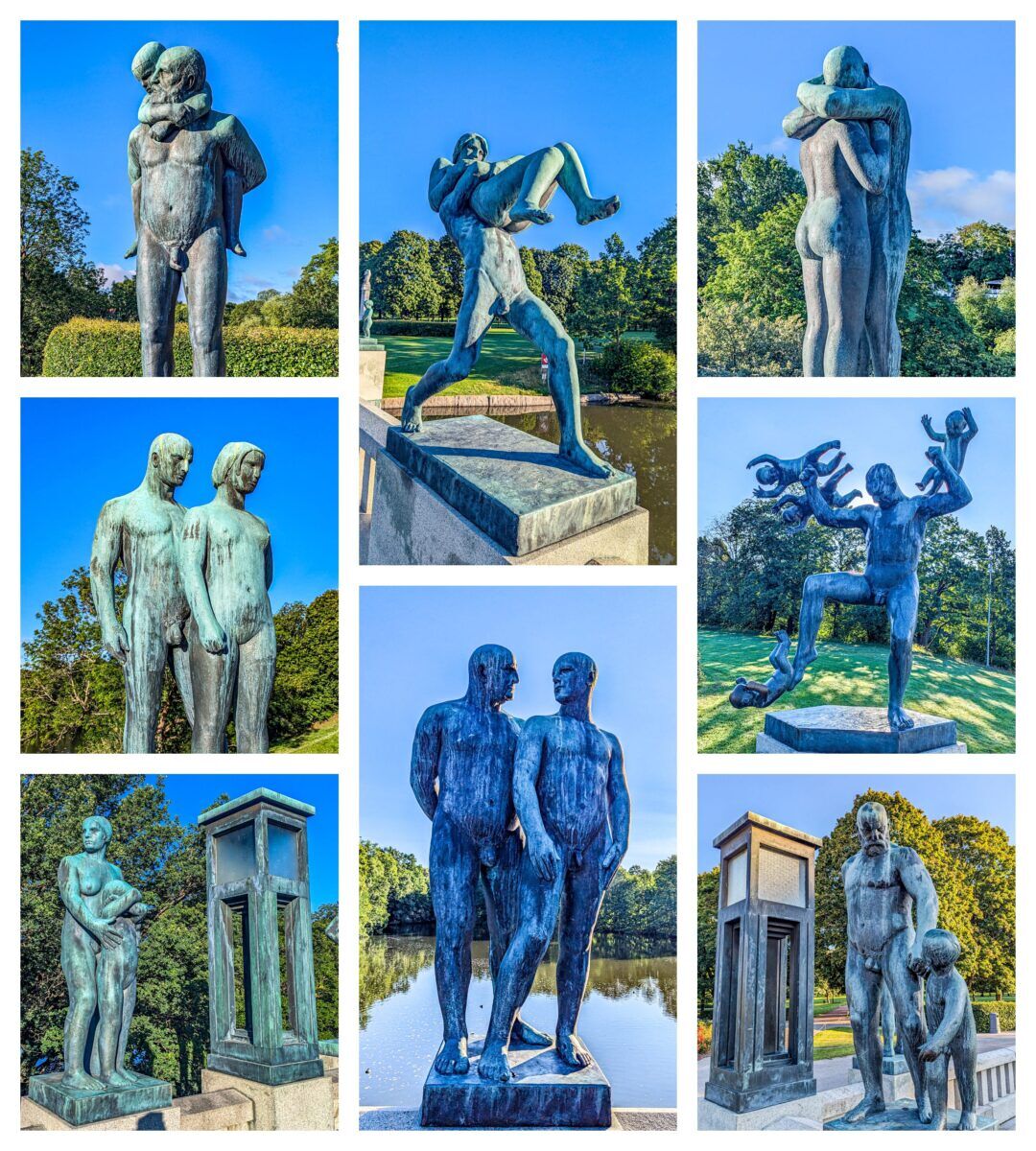
Up ahead, I saw there was much more to this park, including a massive fountain surrounded by more sculptures. And the area beyond that included some kind of massive, engraved obelisk.
This was easily some of the most interesting art I’d ever seen. Was it all by the same artist? It looked like it might be.
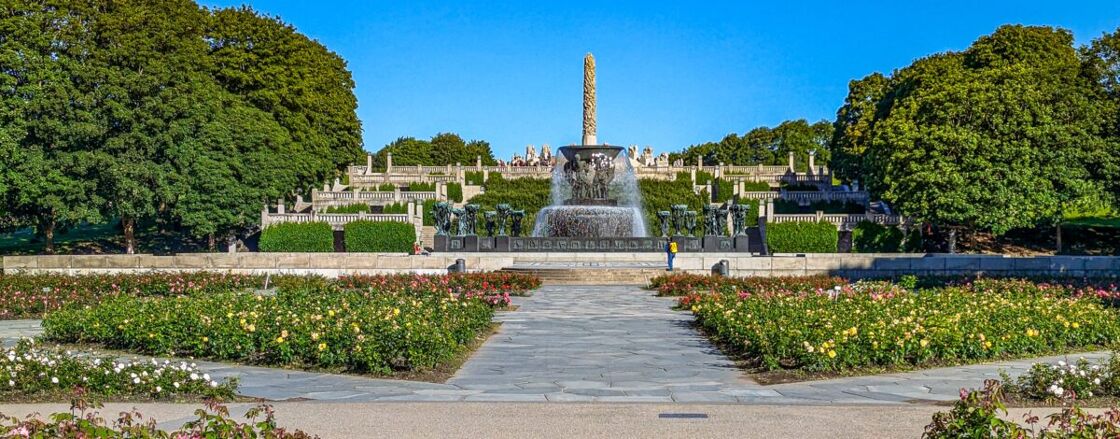
Researching it later, I learned I’d stumbled upon Vigeland Sculpture Park, the largest sculpture park in the world created by a single artist — and also one of the world’s largest sculpture parks, period.
It’s located inside Frogner Park, Oslo’s largest park. The sculpture park covers 32 of Frogner’s 80 hectares, and Gustav Vigeland created everything there.
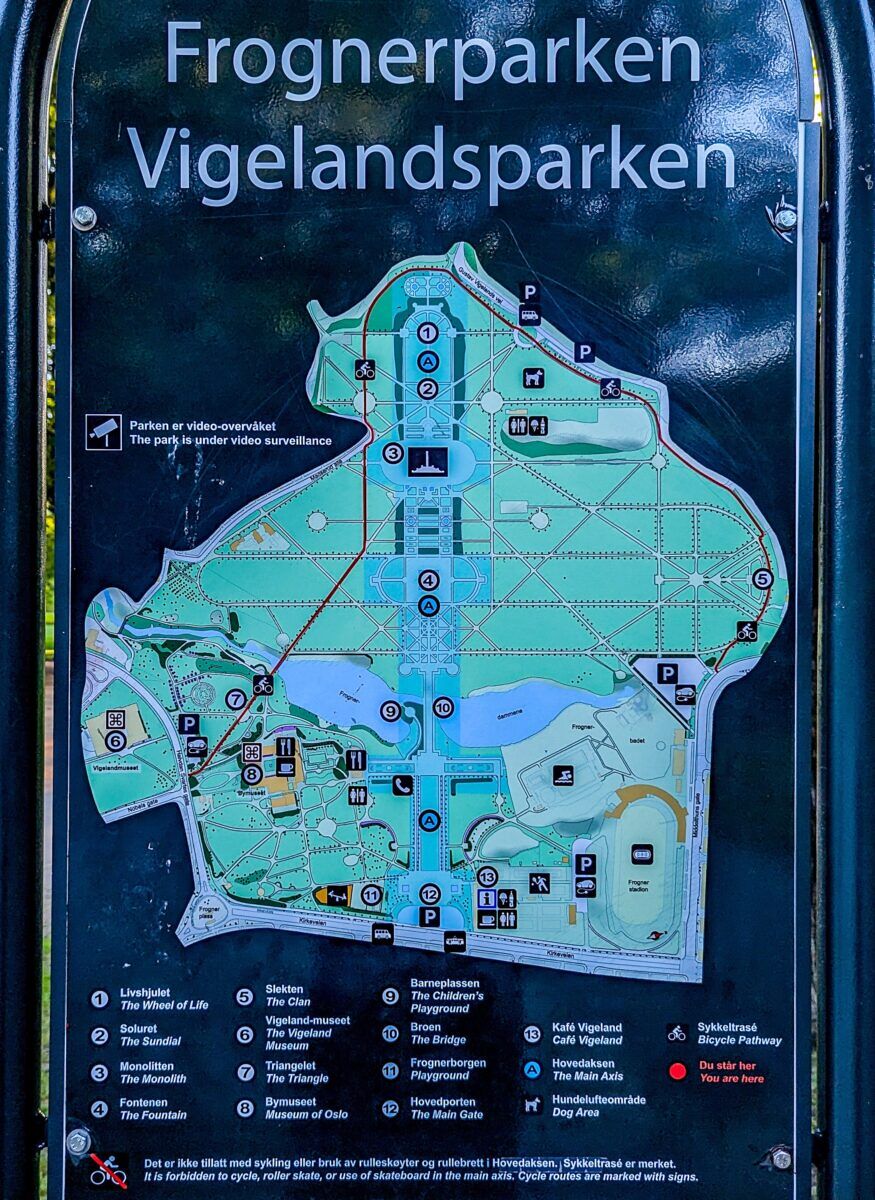
The park exists thanks to a very unusual deal between Oslo and Vigeland.
In 1921, the city decided to demolish his house and studio. After a long dispute, the city agreed to build him a much larger studio and finance his work; in exchange, the city would own much of the new art he created, and the home and studio would become a museum after he died.
He had long been working on a fountain meant to be placed in front of Norway’s parliament building. However, once the deal with the city was struck, they both agreed it should instead be placed in nearby Frogner Park.
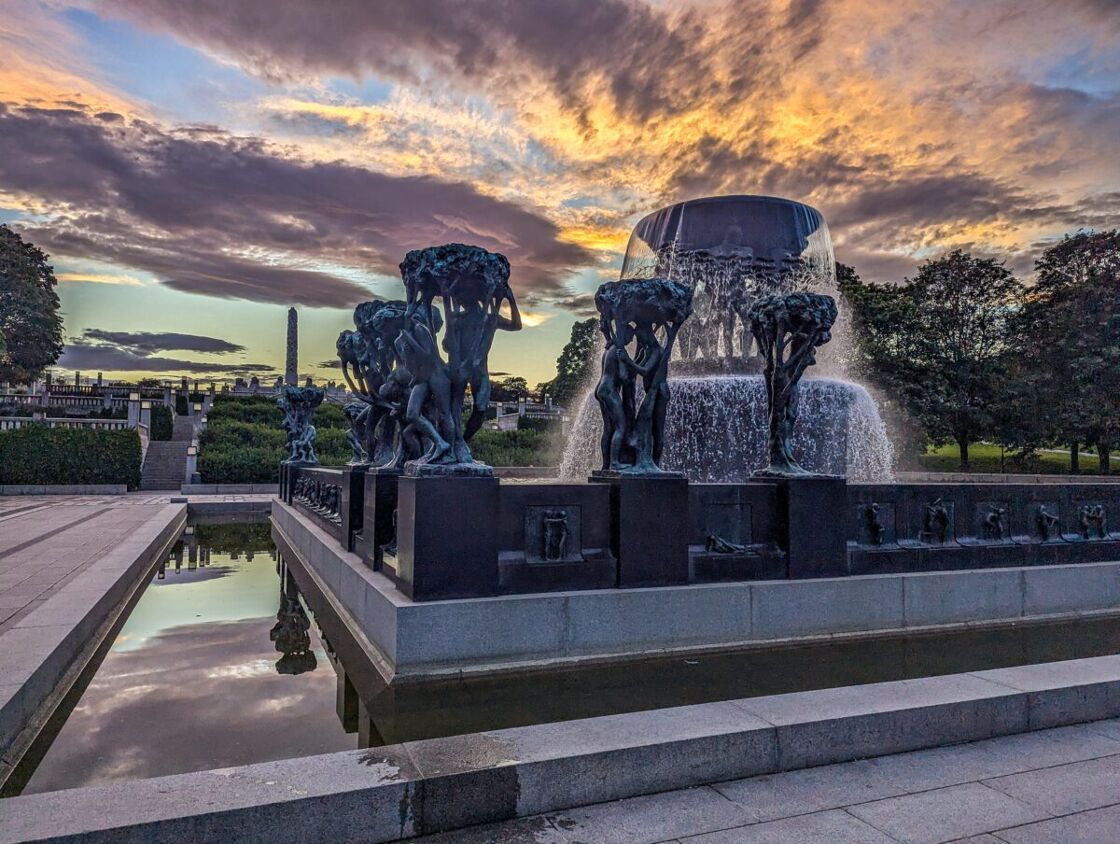
The idea for the fountain soon became just one part of a greater sculpture park, which also quickly grew in scope. Vigeland’s vision eventually included a bridge lined with 58 bronze sculptures, a 17-meter obelisk carved from a single piece of granite, dozens of other sculptures, massive iron gates at the park’s various entrances, gardens, and more.
It wasn’t until the early 1940s that Vigeland’s designs finally began being installed in the park. Unfortunately, Vigeland died in 1943 at age 73.
Construction continued based on his models and designs, and by 1949, the last major work — the “Wheel of Life” — had been put in place.

Smaller elements continued to be added, and the park didn’t have its “official” unveiling until June 1993.
But just how famous is Vigeland and his sculpture park? I’m pretty well-traveled, but I’d never heard of them.
“During his life, Vigeland was more famous than Edvard Munch [another Norwegian artist, the famed creator of The Scream],” a guide told me when I took a walking tour of the park. “In fact, the two artists were friends for a time, but it didn’t last because Munch was jealous of Vigeland’s success.”
Ironically, after Munch’s death, he became much more famous than Vigeland, especially internationally.
That said, Vigeland is still very famous regionally, and his park is the most popular tourist attraction in Norway, with about a million visitors a year.
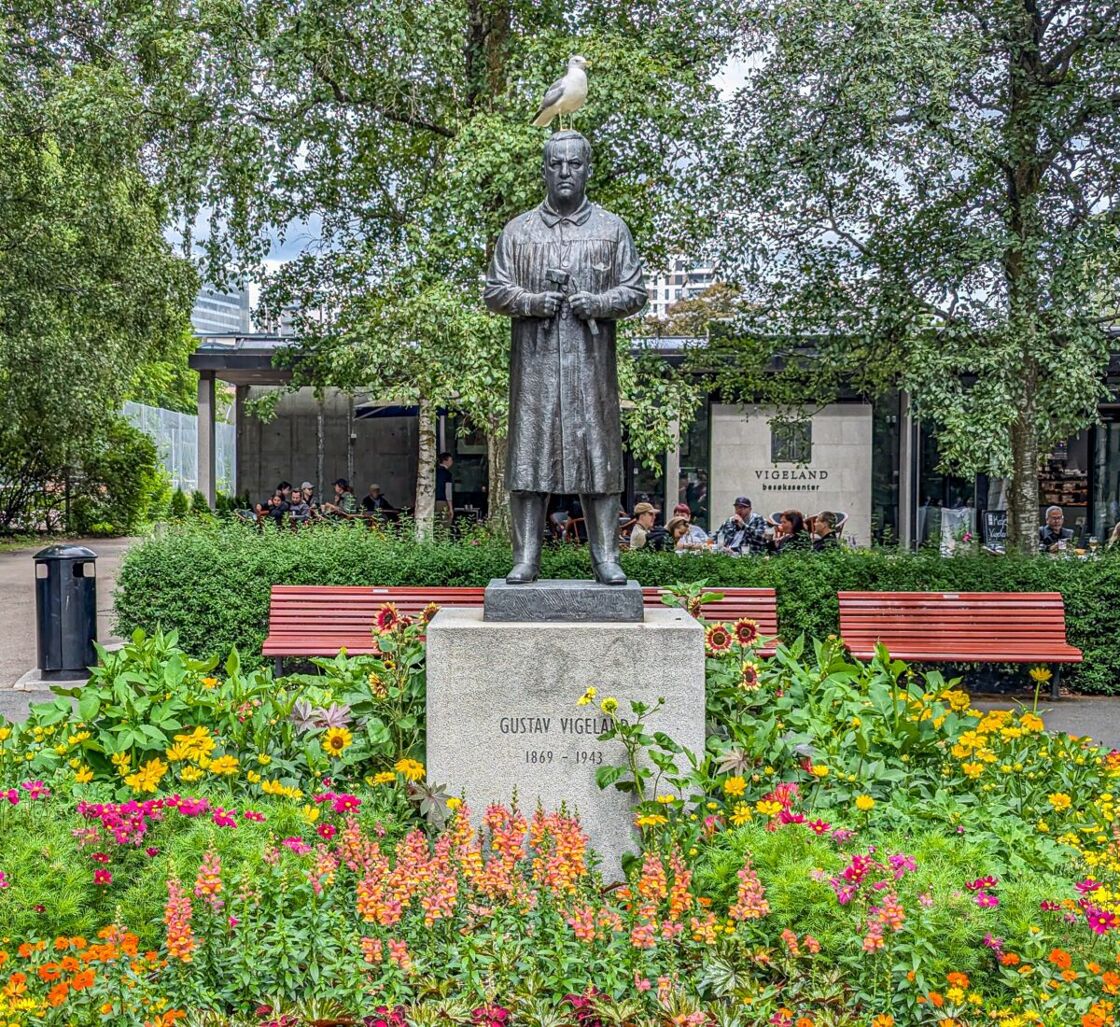
One of Vigeland’s conditions for signing that contract with the city was that he would have a complete say over the art in the park. He had a team of stone and iron workers helping to execute his visions, but Vigeland called all the shots, and even after he died, his specifications were closely followed.
The park starts with the grand Main Gate, constructed between 1941 and 1942.

The gate is made of granite and wrought iron. The lower half of the ironwork includes dragon-like figures — a nod to Norse mythology — and the top elements are Vigeland’s later addition to his earlier design, done in a then-popular Art Deco style.
Once through the gate, visitors are greeted by a row of trees, a green lawn, and an unobstructed view of almost all of the park’s 850 meters.
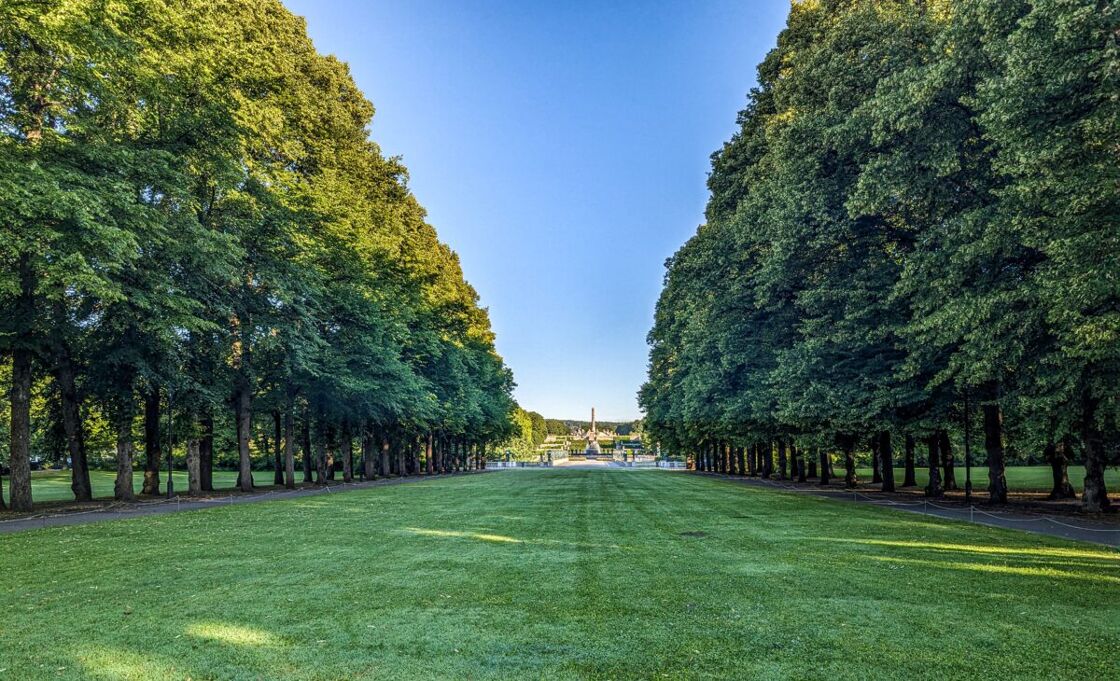
Visitors next cross The Bridge, which is lined with the 58 bronze sculptures I saw on my first visit. The Bridge crosses a pond where a half-dozen bronze babies have been placed around a small sitting area by the water’s edge.

Once across The Bridge, visitors reach The Fountain, the piece Vigeland worked on the longest. He first conceived the design in 1906, but it wouldn’t be finished until 1947, four years after his death.
The Fountain depicts six giant male figures made of bronze struggling to hold up a large circular basin from which water cascades. Pictures can’t quite capture the size and scale of the Fountain. The basin is 20 meters across, and the giants are each three meters tall.

Surrounding the basin stand twenty more bronze sculptures: people interacting with trees.
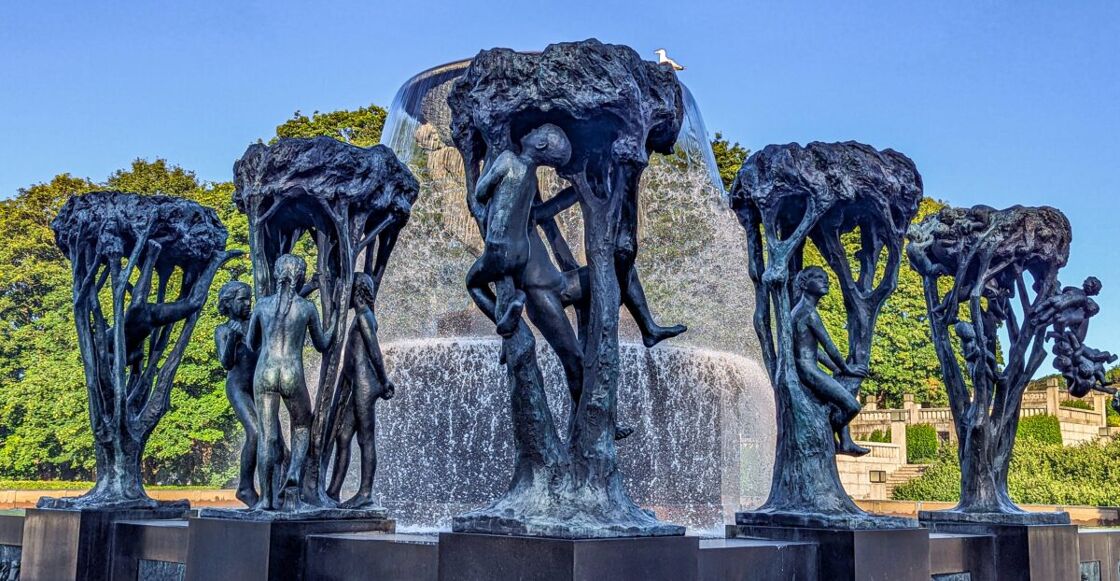
Vigeland rarely commented on the meaning of his work, but in this case, the theme is clear: it speaks of the cycle of human life, from birth to death.
The first tree is filled with babies; the intervening trees show humans gradually growing older; and the last tree shows a skeleton.
All the while, the trees grow on, unchanged.

Vigeland’s art doesn’t shy away from hard truths: the second to last tree shows a terrified man clutching the trunk, not yet ready to face his imminent demise.
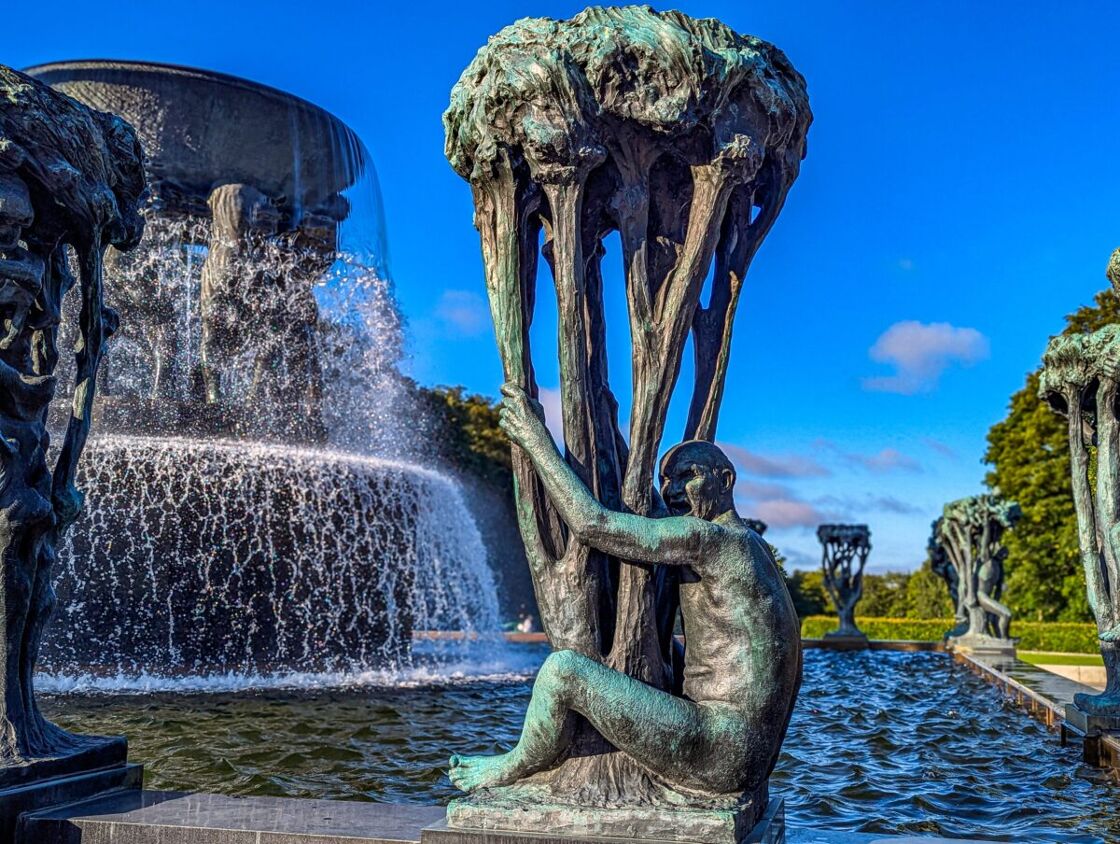
Once past The Fountain, granite steps rise to Vigeland’s most famous work: the 17-meter-tall The Monolith. Weighing 280 tons and carved from a single piece of granite over fourteen years, the Monolith consists of 121 human figures tangled together as the column rises upward.
The theme of The Monolith, arguably the park’s centerpiece, is less clear than the fountain below. Ironically, it’s one of the few of his works that Vigeland ever commented on, cryptically saying only, “This is my religion.”
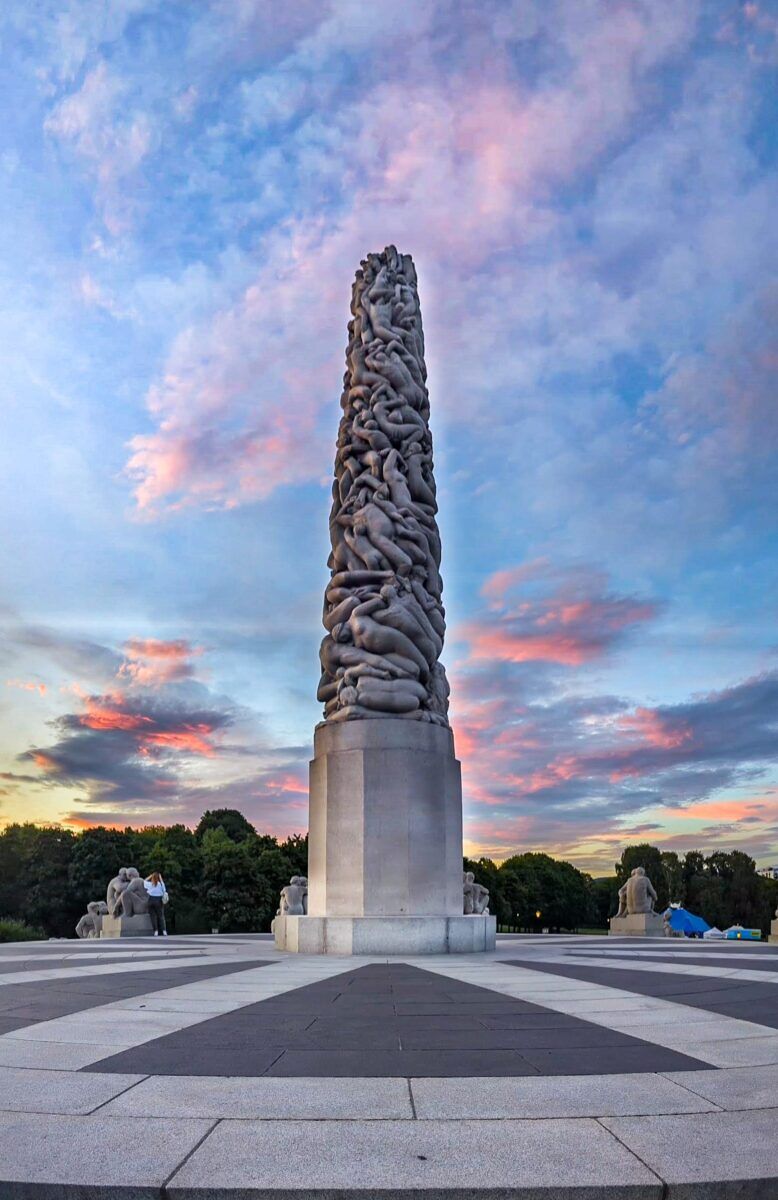
The Monolith stands upon a granite platform surrounded by another 36 granite sculptures of humans.
Once again, the intimacy is striking.
Some sculptures depict happy emotions — a man and woman staring into each other’s eyes.

A man and woman cradling their child.

But sometimes, the intimacy includes a raw vulnerability.
In one, a husband cradles his dead or dying wife. In another, a man struggles to lift a man who has just collapsed — or perhaps, he is finally letting a dying man go.
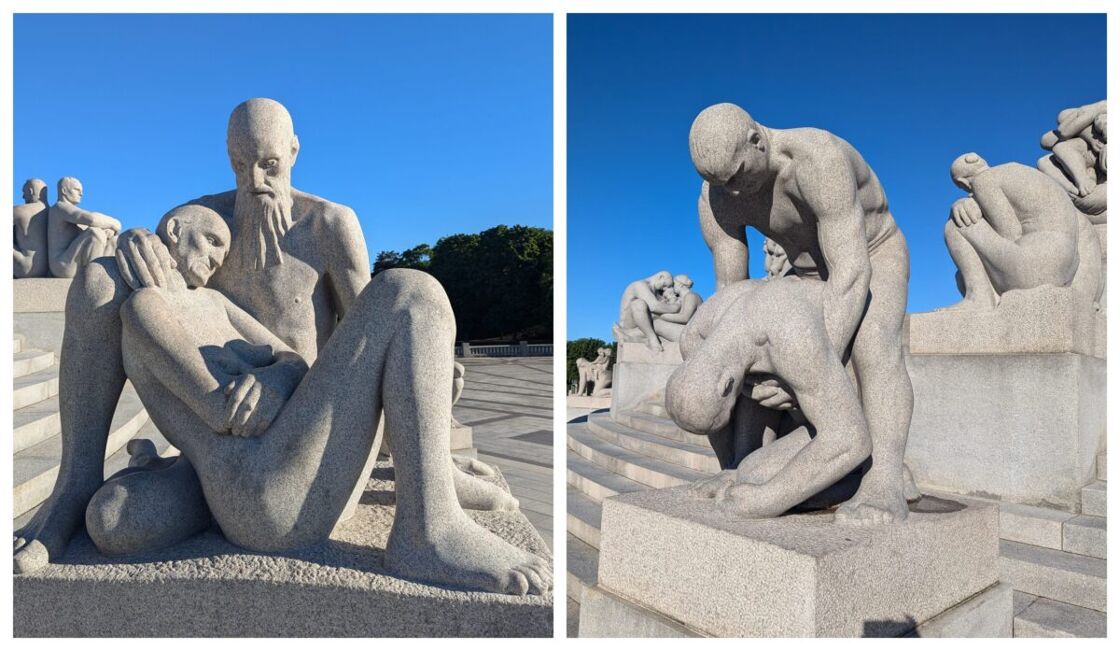
And there is sometimes conflict as well. In one, a man and woman fight, the woman viciously pulling his hair.
In another, two young men assault an older man who has fallen to his knees.
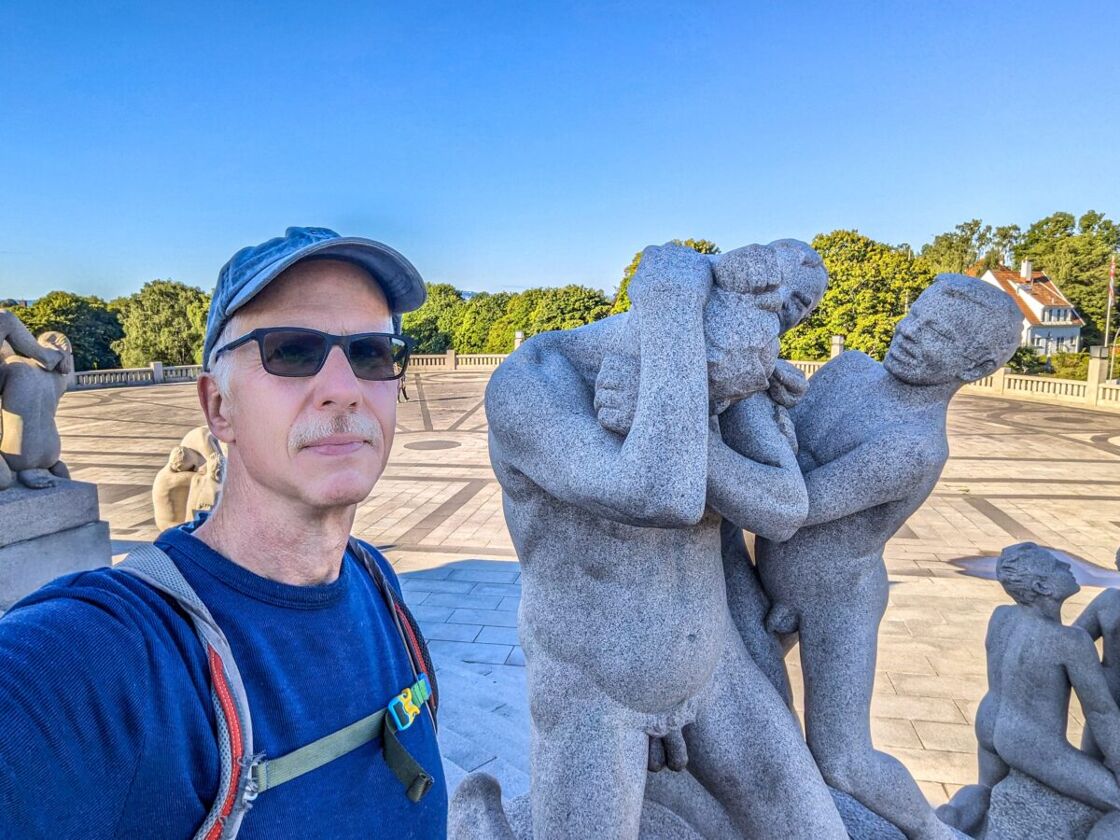
In still another, two children ride on a woman’s back, but they’re using her braid like a horse bridle in her mouth. A playful interlude — or a suggestion that the woman is simply a beast of burden for her family?
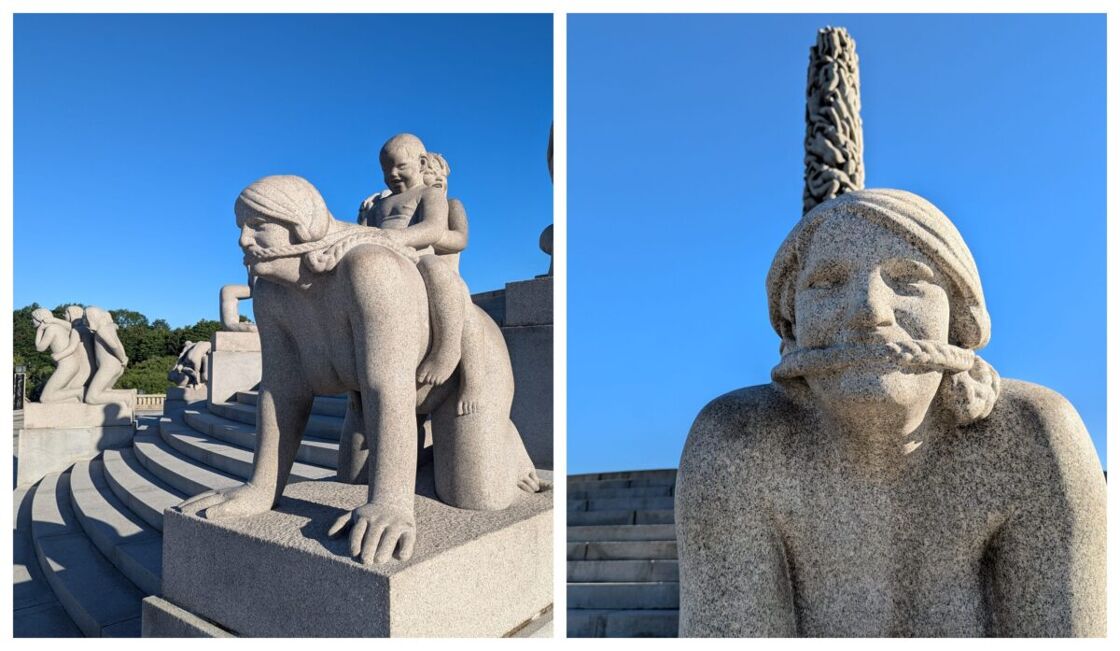
As Brent and I have traveled the world, I’ve been moved by many of the works of art we’ve seen, such as Claude Monet’s paintings or the Hall of Maps in the Vatican Museum.
But nothing has ever moved me quite this much.
It’s partly the scale of the project — either many individual works of art, or perhaps it’s all one giant artwork.
It’s partly because it looks shockingly contemporary despite most of it being designed a century ago. It truly is timeless.
But it’s mainly because it is so obviously about the human experience. These artworks capture the totality of what it means to be human in a way that I found breathtaking.
Kindness and cruelty. Happiness and sadness, fear but also joy.
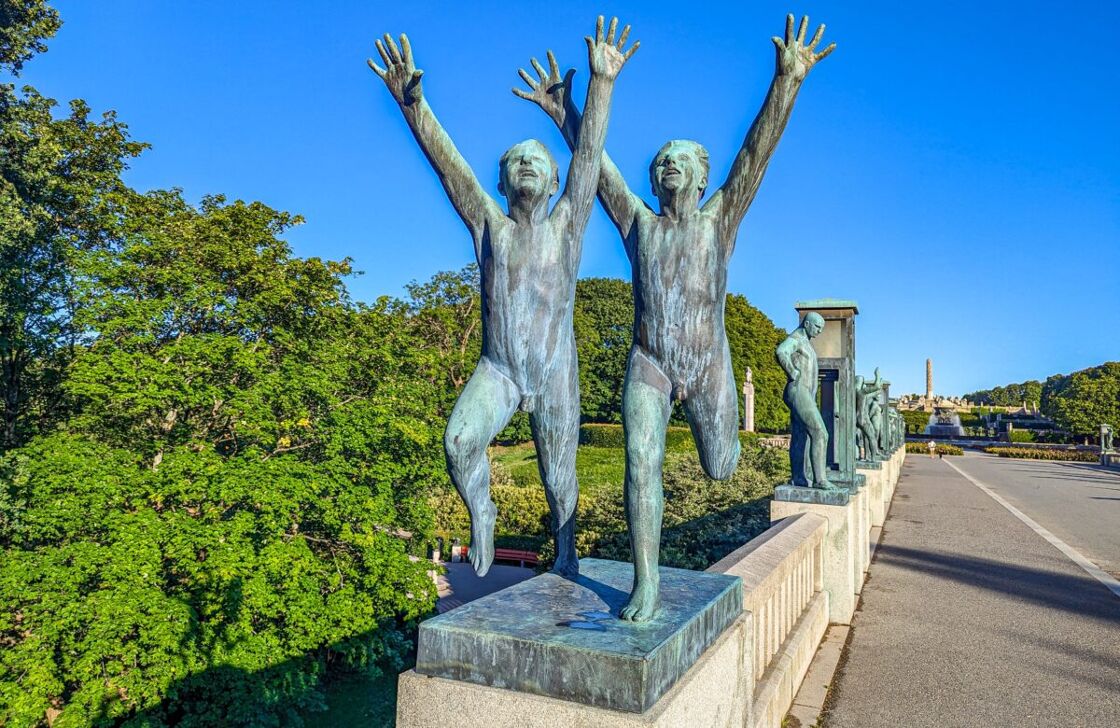
Gustav Vigeland isn’t as internationally famous as Edvard Munch. But I think he should be.
Michael Jensen is a novelist and editor. For more about Michael, visit him at MichaelJensen.com.

 Mark
Mark 





